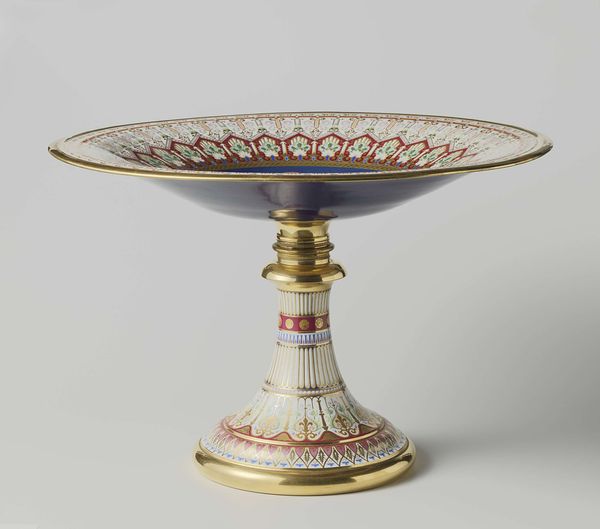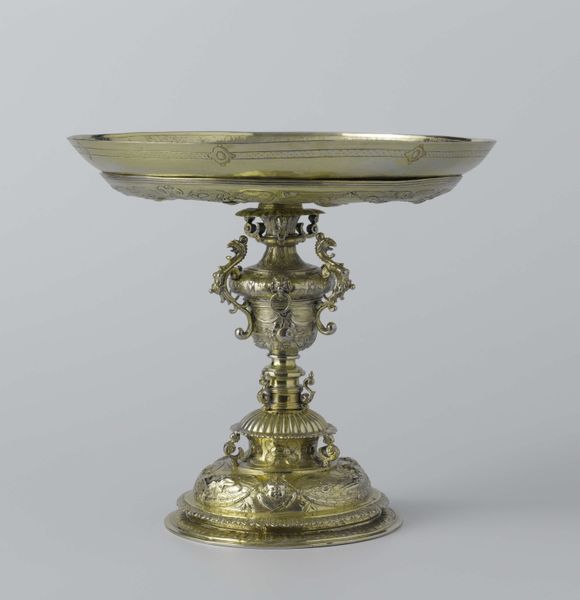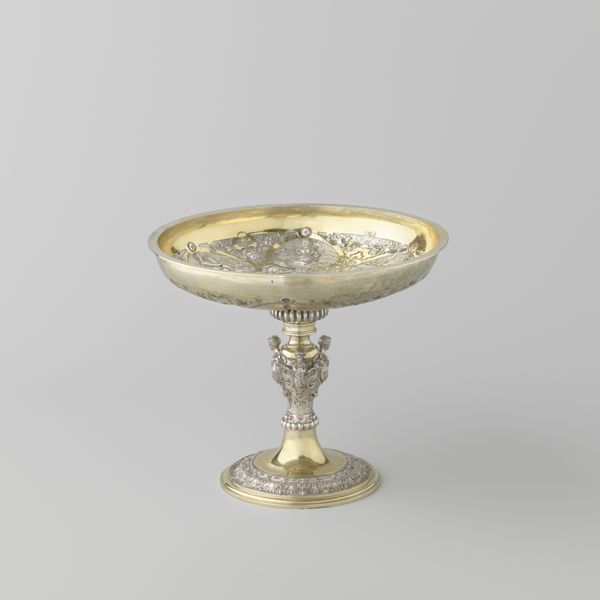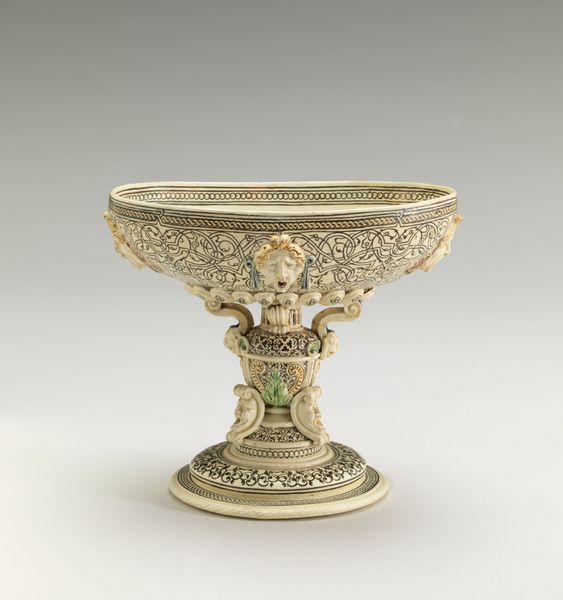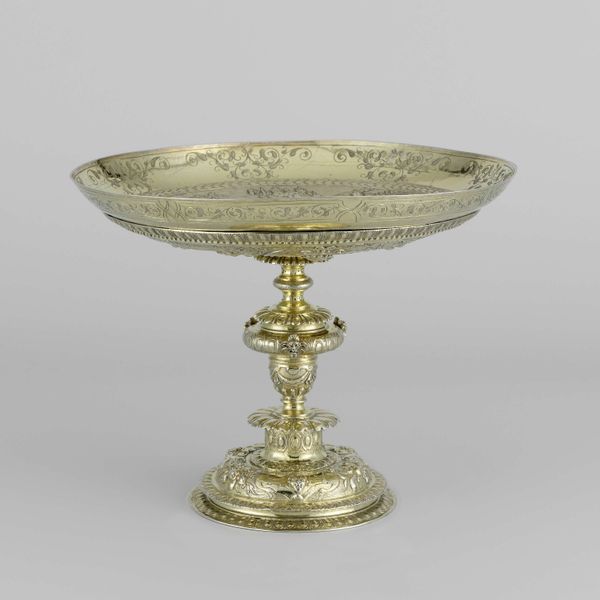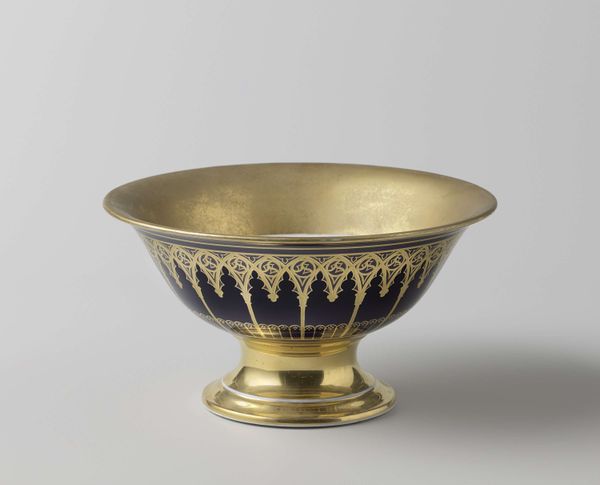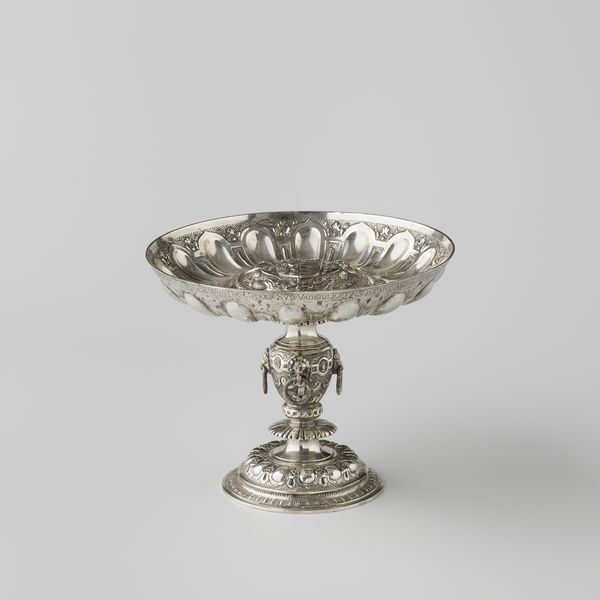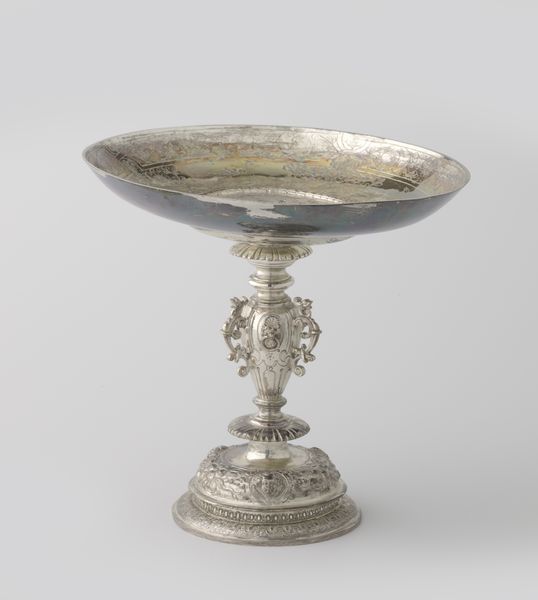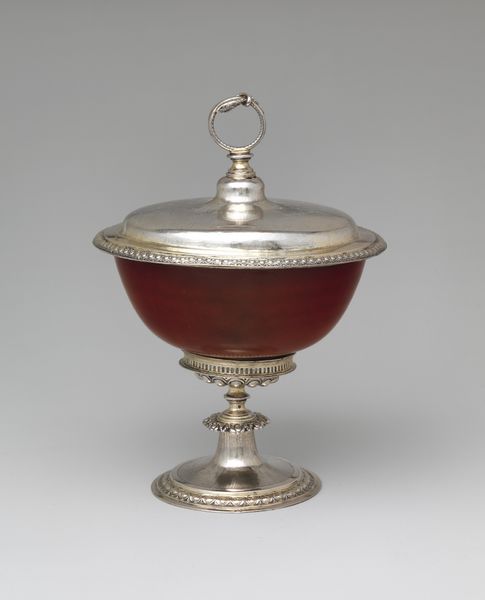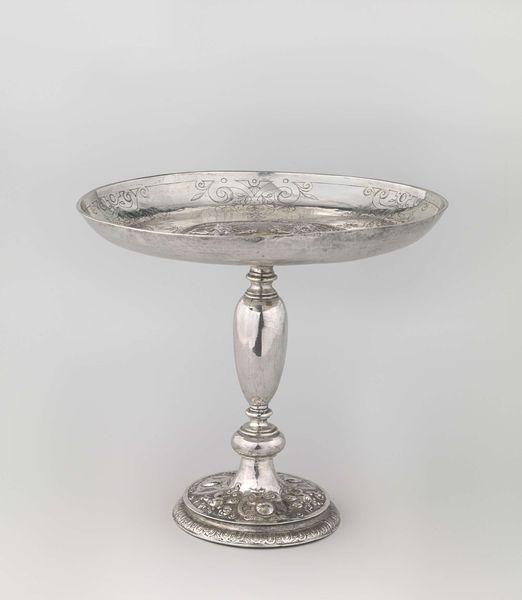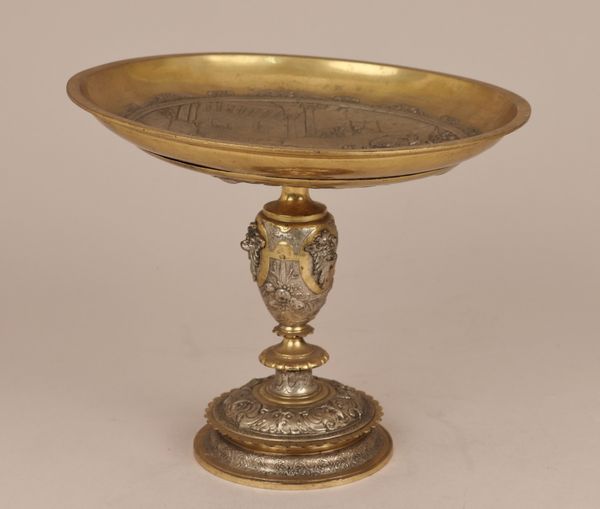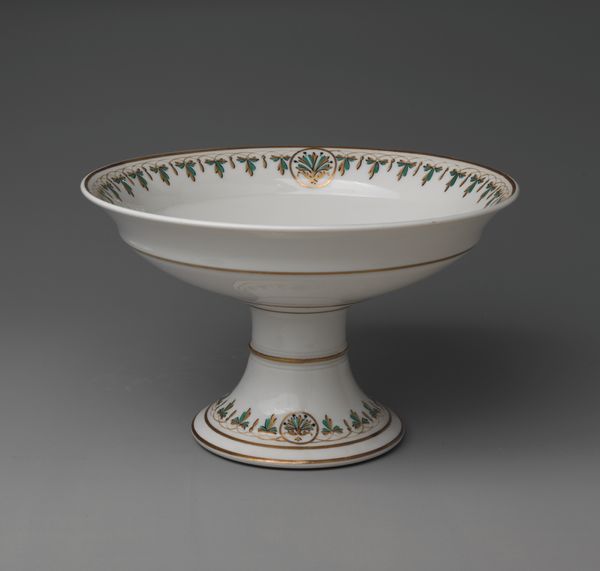
Dimensions: height 39.4 cm, diameter 57.8 cm, height 22.5 cm, height 27.2 cm, diameter 27.0 cm
Copyright: Rijks Museum: Open Domain
Curator: This ornate object is a "Tazza with landscapes," created circa 1837-1844 by the KPM, the Königliche Porzellan Manufaktur. It resides here at the Rijksmuseum. Editor: My initial impression? Decadence! This piece oozes lavishness, almost painfully so. I feel as though I've stepped into a drawing room in some terribly romantic historical drama, filled with too much chintz, and whispered secrets. It’s so pretty it’s almost unsettling. Curator: "Painfully lavish" – I love that. The layering is incredible: landscapes painted in miniature nestled amidst the intricate gold work. Do you notice any resonance of Romanticism here, maybe a yearning for an idealised, picturesque past? Editor: Absolutely! Those tiny landscapes circling the rim? They’re straight out of a daydream. Everything is soft and a little… blurred around the edges. No harshness to be seen, just pure, pastoral fantasy. The intense Prussian blue might symbolize a longing for that idealized landscape. Or maybe it’s just pretty, haha! Curator: Both could be true, simultaneously! Considering the cultural context, we can't ignore the German Expressionist touches either—perhaps speaking to a broader longing for emotional intensity and an escape from burgeoning industrial life? Do you think that explains the detail? Editor: Mmm, possibly. I always wonder, when looking at art this decorative: what purpose did it actually serve? Was it purely ornamental, a status symbol, or did people really pause, really *look* at those landscapes and find… something deeper? Curator: Well, domestic porcelain served as social signalling, often tied to aristocratic and educated society. They represented order, civility, beauty and, of course, wealth. To have this on your mantlepiece signals that you are aligned with these principles. Editor: Ah, the 19th century's version of a designer handbag, but much, much prettier! Though the thought of such detail relegated to simple "status" seems such a shame. Still, this could be viewed by an admirer for hours at a time—maybe it’s done its work for us through all of the subsequent centuries. Curator: Precisely! Objects such as this become time capsules, embedding a specific cultural memory, and offering us insights into its emotional world and social ambitions. The layers upon layers continue. Editor: Which only proves you don't need an oil painting on a massive canvas to stir a response. Sometimes, the greatest emotional punch comes in a delicately crafted, porcelain package. Thanks for taking the time to reveal some new perspectives, truly insightful.
Comments
No comments
Be the first to comment and join the conversation on the ultimate creative platform.
